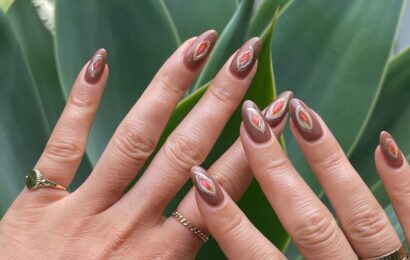Your astrological birth chart is fixed — your skin's needs are not.
Does your skin get drier when your radiator kicks on in the winter? Do you experience oiliness close to your period? Get breakouts after a stressful week at work? The solution might be making a few tweaks to your skincare routine from time to time — even if it's not traditionally what you've been told is best for your skin type.
Dr. Ranella Hirsch, a board-certified dermatologist based in Boston, says the idea that your skin has a set type is bunk. "People are told to rely on skin types so much and get so religiously attached to them, but it's just not really as cut and dry as it may seem."
According to the American Academy of Dermatology, there are five main skin types board-certified dermatologists use: oily, dry, combination, normal, and sensitive. These categories are also widely used by skincare companies to market their products (as well as by skincare influencers to endorse said products). And it's not like all of those experts would intentionally lead us astray, but it is possible they're relying on old information, and it's all just gotten a bit out of hand.
Dr. Mona Gohara, board-certified dermatologist and Yale associate clinical professor says skin types were initially used to determine the level of SPF needed for protection and skin cancer risk. "As our understanding of science has expanded, we know that the sun/UV rays are not the only factors affecting skin health. How we heal after inflammation or injury (pigmentation and scarring), what ingredients are triggering or safe, and how sebaceous (oily), hydrated, or sensitive our skin is, are all important distinguishing factors," she explains. "So, the original purpose of skin types faded into a realization that each of us has individual characteristics driving how our skin should be treated."
The understanding of skin being individualistic has inspired a number of customizable skincare brands like Curology, Hawthorne, Function of Beauty, and Atolla — an MIT-born algorithm that translates data from an in-depth questionnaire into bespoke skincare products. (Atolla was co-founded by Dr. Hirsch and the technology was sold to Function of Beauty in 2021.)
"[Atolla] started with the notion of the categories of skin types but data humbles you," says Dr. Hirsch. "For example, we studied four sisters and you couldn't tell they were related based on their data. We also had to give the testers specific instructions and templates so people would test on the same spot. If you move something over, it's going to give you a different reading. The same goes for time of day, or if you test your skin right after washing it you can artificially create a response."
That means: Your cheeks might be dry, your T-zone oily, or tightness right after washing your face — or all of the above at different times of the month or year. If your entire skincare routine is based on the belief that you've got one type and that certain things will never work for you, your answer may be in letting go of that idea.
And then there's Holifrog, a brand that describes its products as "situational skincare" instead of categorizing them based on skin type.
"Happy skin is skin that's in balance, but our skin is not perfect, which means there are many times that you need to create balance," says Holifrog co-founder Emily Parr. "I follow somewhat of a formula: skin type + current skin concern(s) = skin situation (aka: how you are going to treat your skin at that moment). Therefore, I don't believe in any one 'routine' that should be replicated each morning or every single night in perpetuity."
“I don’t believe in any one ”routine’ that should be replicated each morning or every single night in perpetuity.”
So, how should you pick which skincare products to use in your routine? Both Drs. Hirsch and Gohara say that your skin type can be a good starting point, but to be open to switching things up based on how various factors affect your skin, such as hormones, environment, and trauma and inflammation from procedures or breakouts.
Dr. Hirsch goes further to suggest switching the vehicle of the product once you've figured out what ingredients are best for your concerns and skin type. "The active component (like vitamin C or retinoids) is the first thing to think through. The next thing is the vehicle and that's how you deliver these actives," she explains. A few examples include swapping the rich, moisturizing cream used to combat dry, winter weather-related skin for a lighter gel-cream in the summer, or swapping a creamy cleanser for a gel-based with gentle exfoliating AHA acids to control menstrual cycle-related oiliness and breakouts. "You can find your ingredients in almost any textural base. That's really the smartest way to do it and you need fewer products this way," Dr. Hirsch says.
VIDEO: Salicylic Acid vs Benzoyl Peroxide: Which Should I Use To Treat My Acne?
Parr says moving away from this outdated methodology has been easy for Holifrog customers to grasp. "Because we started with a line of six cleansers and the philosophy of 'situational cleansing,' it was digestible for the consumer," she says. There's a cleanser for brightening dull skin, exfoliating for breakouts, and soothing for irritated, dry skin. The brand has since expanded to offer three serums and a universal moisturizer with antioxidants.
The bottom line? Skin categories are helpful as an initial guide for building out a skincare routine. But just like how our sun signs can be a key to our personalities, there's a whole sky full of constellations that make us who we are.
Source: Read Full Article







